Home » Archives for October 2013
Books that changed your life
Posted by Unknown
10 most scenic cemeteries
Posted by Unknown
Don't fire Sebelius; just fix the mess
Posted by Unknown
Editor's note: John R. Kimberly is the Henry Bower professor of entrepreneurial studies and professor of management, health care systems and sociology at the Wharton School of the University of Pennsylvania. He and Hamid Bouchikhi co-wrote "The Soul of the Corporation: How to Manage the Identity of Your Company."
(CNN) -- A host of Republicans is calling for the head of Health and Human Services Secretary Kathleen Sebelius over the troubled health care website rollout. Thirty-three Republican members of Congress signed Rep. John Fleming's letter to President Barack Obama demanding that Sebelius be fired. But whether to sack her is not one of the questions we should be asking.
The secretary spent 3 ½ hours testifying before a congressional committee on Wednesday about the awful mess that was the launch of the federal website intended to allow millions of Americans to sign up for health insurance under the Affordable Care Act.
Punctuated by moments of contrition and obvious frustration, her performance was intended both to signal resolve to the American people that getting the website fully operational was her principal priority and to shield the president from the slings and arrows of the many critics of Obamacare, who gleefully saw this as an opportunity to embarrass him and re-energize their efforts to derail the law.
 John Kimberly
John Kimberly The news Wednesday was replete with stories of Obama's sagging popularity, and one can't help but tie this drop, at least in part, to the problems with the rollout.
So what is he, as our nation's chief executive, to do? Should he heed those calls to demonstrate forceful leadership in a time of seriously flawed performance and fire Sebelius? After all, the argument goes, something like this would not be tolerated in the business world. The consequences would be swift -- the person responsible for the mess would be fired. And didn't she admit in her testimony that she was responsible?
Yes, she did. But here's why the question of whether she should be fired is not the right one.
Obama needs to keep his eye on the big picture. The issue is not Sebelius' future, it's what needs to be done to fix the mess. She has accepted responsibility and has specified a time frame within which she has said the dysfunction will be repaired. Obama should support the secretary fully in her efforts. It is much more important for the President in the long run to make sure that people can sign up for insurance coverage under the ACA than to finger a scapegoat and orchestrate a public beheading.
The difference between forceful leadership and nuanced leadership is significant, and the context and circumstances should determine which -- or what blend of the two -- is appropriate. Whatever momentary boost a "forceful" action might give the president in the polls would not justify the potential long-term consequences of firing a Cabinet member who arguably has served well in turbulent times.
Obama said Wednesday that he would take ultimate responsibility, acknowledging that the buck stops at his desk. Two very tough questions, however, lie ahead: First, what should he do about Sebelius if the mess isn't a whole lot less messy by the end of November? And second, what about his own political capital?
 Secy. Sebelius in the hot seat
Secy. Sebelius in the hot seat 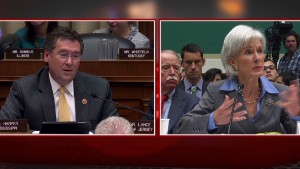 Sebelius to Congressman: 'Whatever'
Sebelius to Congressman: 'Whatever' 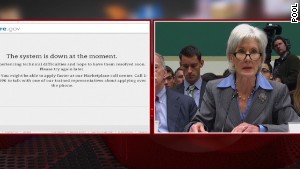 Obamacare site down for Sebelius hearing
Obamacare site down for Sebelius hearing Let's reserve judgment on the first one until the end of November comes around. At this point, my guess is that if implementation of the website hasn't improved very much, Sebelius will resign.
Regarding the second, it's clear that Obama has a lot riding on getting the system to work "well enough." It might not happen by the end of November, but it will happen.
It's not yet clear where the problem with rolling out the health care website really lies. Why such a shambles? Early indications point in two directions: diffuse authority (no one was really in charge of the whole initiative) and poor execution (the contractors simply dropped the ball). As we learn more about how the website was designed and tested, we will be in a better position to figure out what went wrong and where. But for the time being, we don't know -- so why drop the guillotine blade and run the risk of beheading the wrong person?
The problem is real, and so are the politics. Precisely because the ACA is so important to the President, its detractors see a golden opportunity to inflict possibly serious damage on its future. This is political hardball on steroids, and the grandstanding that we see in front of the cameras helps us understand -- as if we didn't already -- why 74% of Americans polled are unhappy with the behavior of Congress. Calls to fire the secretary are intended to put Obama in the position of seeming weak if he does not. So he needs to respond in a way that is seen as decisive yet supportive of the secretary.
The rearview mirror on the health information exchange mess isn't quite in focus yet, because we're still in the middle of it. But it's true that little changes tend to have small ripple effects, and big changes, like the health care act, have huge ripple effects. And no change, little or big, is ever without a glitch.
Life in Washington is a circus. There are many rings with different events going on in each, and all are vying for the audience's attention. If the circus is to continue, the most important job is to know where the tent poles are and guard them zealously. Stay tuned.
Follow us on Twitter @CNNOpinion.
Join us on Facebook/CNNOpinion.
Sebelius has lost all credibility
Posted by Unknown
Editor's note: Newt Gingrich is a co-cost of CNN's new "Crossfire," which airs at 6:30 p.m. ET weekdays. A former speaker of the House, he was a candidate in the 2012 Republican presidential primaries.
(CNN) -- At points, Secretary of Health and Human Services Kathleen Sebelius sounded downright Orwellian in her testimony before Congress on Wednesday, such as when she explained that "the website never crashed. It is functional, but at a very slow speed and very low reliability and has continued to function." Prolonged periods of minimum usefulness, perhaps, but don't call it a "crash," she said with a straight face.
On the other half of the television screen, CNN showed a live shot of HealthCare.gov with the message displayed, "The system is down at the moment." But in the world of Obamacare, a mandate is an "option," expensive is "affordable," and now apparently failure is "function."
Of course, the problem with Obamacare isn't just the website, and the loss in credibility isn't just the secretary's. President Barack Obama and other supporters of the law spent years telling the American people that "if you like your health care plan, you will be able to keep your health care plan. Period." They said detractors who suggested otherwise were lying. They said Republicans were just trying to scare people.
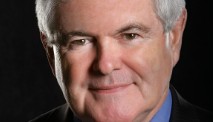 Newt Gingrich
Newt Gingrich The President and his allies were the dishonest ones, as is now clear to everyone. Even while they were promising Americans nothing would change if they liked their policies, "the administration knew that more than 40 to 67 percent of those in the individual market would not be able to keep their plans, even if they liked them," as NBC News reported this week. Already more than 2 million people have had their insurance plans canceled -- three times as many as have signed up for Obamacare.
Yet the President continues to insist, as he did Wednesday in Boston, that "if you had one of these substandard plans before the Affordable Care Act became law" -- of course, it was the law that made them "substandard," by definition -- "and you liked that plan, you were able to keep it." In the same speech, he took credit for liberating Americans from those "substandard" policies. This is as good an example of "double-think" as anything we've seen in American politics.
While the President and the other pitchmen of Obamacare have certainly lost credibility, however, Sebelius in particular needs to be held accountable for the launch failures. She added the problem of terrible management on top of the law's many flaws, and in doing so has put the health, financial security and personal information of hundreds of thousands of Americans at risk.
Across the country there are people who will have to buy insurance through the exchanges in just a few months, some because Obamacare caused their policies to be canceled, some because Obamacare caused their employers to dump their coverage.
 Sebelius in the hot seat
Sebelius in the hot seat 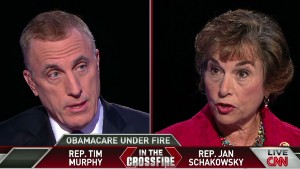 Lawmaker: Obamacare is better coverage
Lawmaker: Obamacare is better coverage Many of these people will face steep new costs that they weren't anticipating. But today, a full month after the exchanges went live, Americans who visit HealthCare.gov to find out what coverage they and their families will have and how much it will cost them must spend hours of frustration trying to navigate a broken system.
Even more alarming, the secretary's bad execution of the President's bad plan could put thousands of Americans' personal information at risk. Sebelius told Rep. Mike Rodgers on Wednesday that she would have to get back to him on whether there had ever been a complete security test of the system.
When the person who is supposedly overseeing a system into which hundreds of thousands of people are entering their personal information says she will "get back to you" about whether there has been thorough security testing, it is terrifying.
And on top of everything else, the exchange website is a complete boondoggle. Sebelius testified the government has spent almost $175 million on HealthCare.gov so far, and the real tab will surely be much higher after the emergency repairs. Already, this is substantially more than Apple spent to develop the iPhone, and even (as I pointed out recently) more than NASA spent on the Mars Pathfinder mission. It likely makes HealthCare.gov the most expensive website ever built, and certainly the most expensive not to function -- although perhaps that word no longer means what we thought it did.
These failures of management make the pain of a bad law even worse. I oppose the law. I have always opposed the law. I believe it will fail and cannot be improved. But most of all, honesty counts in public officials, and after Sebelius' testimony Wednesday she should have lost her credibility even in the eyes of Obamacare's supporters. It's time to offer her the option of mandatory retirement.
Follow us on Twitter @CNNOpinion.
Join us on Facebook/CNNOpinion.
Parents, don't be such Hallo-weenies
Posted by Unknown
Editor's note: Jeff Pearlman blogs at jeffpearlman.com. His most recent book is "Sweetness: The Enigmatic Life of Walter Payton." Follow him on twitter @jeffpearlman.
(CNN) -- It's Halloween, and I'm here to tell you to scare your kids fearlessly. It's good for them. First, a story.
Early last summer, my 9-year-old daughter and I took a trip to Hershey Park.
Casey loves roller coasters (we first tackled Great Adventure's Nitro and its blinding 80-mph speed when she was 4). But vertical plunges? No.
That day I repeatedly asked her whether she'd like to try Fahrenheit, a coaster that (egad) ascends 121 feet before plummeting down a (double egad) 97-degree drop. She'd shake her head, "No." Once she overcame the fear and took the plunge, I thought, genuine euphoria would ensue. Finally, I made an offer.
"Casey," I said, "if you go on Fahrenheit, I'll let you play three games and buy you a soda (banned in our household).
"OK," she said, gulping. "I'll do it." When the attendant locked down the protective bar, tears appeared.
"I don't want to do this," she said. More tears.
"Daddy, I don't want to do this." Onlookers began to stare.
"Honey, are you OK?" an employee asked. "Do you need to get off?"
"Nooooo," Casey said, still crying. "No."
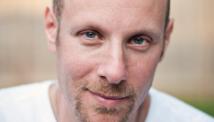 Jeff Pearlman
Jeff Pearlman The ride started to move. Up. Up. Up. Straight up, staring into the blue Pennsylvania sky.
"Daddy, noooooooo," Casey wailed. "Daddy, I can't do this ... Daddddddddyyyyyyyyy ..."
I was the worst father in history.
We began our steep downward plunge. I turned to look at Casey. She was grinning, ear to ear.
"Whoooooooooooooooo!" she screamed. "This! Is! Awesome! This! Is! Awesome!"
It was.
As yet another October 31 approaches, I've been thinking a lot about Casey and Fahrenheit and the virtues of a scared tyke. Last weekend, at my children's elementary school, the wife and I organized a Halloween party that included, for the first time, a haunted house. The fare was pretty typical: a man in a Michael Myers mask reaching out toward people, a cemetery filled with zombies, a crazy chef cooking guts and eyeballs. It was held in a dark hallway and despite that was clearly more about fun than fear.
Yet one after another, parents questioned me about whether their 6-to-11-year-old tykes were ready for a fright, whether perhaps being too scared would create some sort of enduring mental impairment that could haunt their dreams (and ruin their Harvard futures). I wasn't merely asked whether the house was scary. I was asked whether Junior could "handle it."
"He might flinch a little," I'd say. "But he can handle it."
 Street smarts for trick-or-treating
Street smarts for trick-or-treating  See Chris Cuomo's Halloween outfit
See Chris Cuomo's Halloween outfit  Campus cracks down on costumes
Campus cracks down on costumes Some turned away angrily. Others silently walked off. About 400 kids took the plunge. Some cried at the end, but only a few.
Truth is, sometimes kids need to be scared. Pushed. Coerced. And forced to try things that might feel uncomfortable or awkward or even terrifying. But, handled right, can also allow them to emerge feeling proud, brave and accomplished.
"Children are resilient by nature," said Tammy Regnet, a prevention specialist in the Buffalo, New York, public school system. "As long as there's some support available, they can bounce back from difficult experiences without much trouble."
In her work, Regnet is part of a team that takes inner-city children to a ropes course in the woods. There's a zipline, and it's high and long and daunting.
"The kids have to be pulled up, and when they're ready to stop they yell out, 'OK, stop now!'" said Regnet. "But we always say, 'Are you sure you don't want to go a bit further?' We try and talk them into it, because the goal is to have them experience life. Without crossing a comfort line, that's hard to do."
Are there limitations? Surely, said Vanessa Taback, a psychologist with the Yonkers public school system. In New York parents should already be cued into their kid's emotional readiness.
"It's not about age," Taback said. And then there is common sense: "What you need to be aware of is what's developmentally appropriate. Blood and guts flying out from the ceiling atop a 6-year old probably isn't the best thing."
Then again, she said, "At least if a parent is there, it can explained and grasped. Children can be very concrete. So they need an outlet to discuss these things. Haunted houses can be a lot of fun for young kids. So can Halloween. But it's valuable to have an adult nearby."
Halloween is about candy and masks, but it's also about crossing that comfort line: a crazy day when a kid can stroll through a haunted house, ring a doorbell and see the unfamiliar face of someone who gives him or her candy, talk about ghosts and goblins and things that go bump in the night. It should be a little scary; let them handle it.
More than ever, parents today seem obsessively determined to do more than merely observe and (if needed) explain. We unnecessarily hold our kids back a year of school in the name of "getting ahead." We present every member of every youth team with a season-ending medal, even if they went 0-11 and scored -23 goals. We kick off the school year by demanding principals place our precious darlings with just the right teacher in just the right environment with just the right classmates. We coddle and comfort and make certain no step will be taken without a fluffy pillow to fall back upon.
Well, to hell with that. Unless your child is absolutely petrified beyond belief (like, ahem, my son), find the nearest haunted house, plunk down the $20 and take your children for the most frightening little walk of their lives.
Then watch as they scream their heads off -- and rave about it right after.
Follow us on Twitter @CNNOpinion.
Join us on Facebook/CNNOpinion.
Scare your kids--it's good for them
Posted by Unknown
Editor's note: Jeff Pearlman blogs at jeffpearlman.com. His most recent book is "Sweetness: The Enigmatic Life of Walter Payton." Follow him on twitter @jeffpearlman.
(CNN) -- It's Halloween, and I'm here to tell you to scare your kids fearlessly. It's good for them. First, a story.
Early last summer, my 9-year-old daughter and I took a trip to Hershey Park.
Casey loves roller coasters (we first tackled Great Adventure's Nitro and its blinding 80-mph speed when she was 4). But vertical plunges? No.
That day I repeatedly asked her whether she'd like to try Fahrenheit, a coaster that (egad) ascends 121 feet before plummeting down a (double egad) 97-degree drop. She'd shake her head, "No." Once she overcame the fear and took the plunge, I thought, genuine euphoria would ensue. Finally, I made an offer.
"Casey," I said, "if you go on Fahrenheit, I'll let you play three games and buy you a soda (banned in our household).
"OK," she said, gulping. "I'll do it." When the attendant locked down the protective bar, tears appeared.
"I don't want to do this," she said. More tears.
"Daddy, I don't want to do this." Onlookers began to stare.
"Honey, are you OK?" an employee asked. "Do you need to get off?"
"Nooooo," Casey said, still crying. "No."
 Jeff Pearlman
Jeff Pearlman The ride started to move. Up. Up. Up. Straight up, staring into the blue Pennsylvania sky.
"Daddy, noooooooo," Casey wailed. "Daddy, I can't do this ... Daddddddddyyyyyyyyy ..."
I was the worst father in history.
We began our steep downward plunge. I turned to look at Casey. She was grinning, ear to ear.
"Whoooooooooooooooo!" she screamed. "This! Is! Awesome! This! Is! Awesome!"
It was.
As yet another October 31 approaches, I've been thinking a lot about Casey and Fahrenheit and the virtues of a scared tyke. Last weekend, at my children's elementary school, the wife and I organized a Halloween party that included, for the first time, a haunted house. The fare was pretty typical: a man in a Michael Myers mask reaching out toward people, a cemetery filled with zombies, a crazy chef cooking guts and eyeballs. It was held in a dark hallway and despite that was clearly more about fun than fear.
Yet one after another, parents questioned me about whether their 6-to-11-year-old tykes were ready for a fright, whether perhaps being too scared would create some sort of enduring mental impairment that could haunt their dreams (and ruin their Harvard futures). I wasn't merely asked whether the house was scary. I was asked whether Junior could "handle it."
"He might flinch a little," I'd say. "But he can handle it."
 Street smarts for trick-or-treating
Street smarts for trick-or-treating  See Chris Cuomo's Halloween outfit
See Chris Cuomo's Halloween outfit  Campus cracks down on costumes
Campus cracks down on costumes Some turned away angrily. Others silently walked off. About 400 kids took the plunge. Some cried at the end, but only a few.
Truth is, sometimes kids need to be scared. Pushed. Coerced. And forced to try things that might feel uncomfortable or awkward or even terrifying. But, handled right, can also allow them to emerge feeling proud, brave and accomplished.
"Children are resilient by nature," said Tammy Regnet, a prevention specialist in the Buffalo, New York, public school system. "As long as there's some support available, they can bounce back from difficult experiences without much trouble."
In her work, Regnet is part of a team that takes inner-city children to a ropes course in the woods. There's a zipline, and it's high and long and daunting.
"The kids have to be pulled up, and when they're ready to stop they yell out, 'OK, stop now!'" said Regnet. "But we always say, 'Are you sure you don't want to go a bit further?' We try and talk them into it, because the goal is to have them experience life. Without crossing a comfort line, that's hard to do."
Are there limitations? Surely, said Vanessa Taback, a psychologist with the Yonkers public school system. In New York parents should already be cued into their kid's emotional readiness.
"It's not about age," Taback said. And then there is common sense: "What you need to be aware of is what's developmentally appropriate. Blood and guts flying out from the ceiling atop a 6-year old probably isn't the best thing."
Then again, she said, "At least if a parent is there, it can explained and grasped. Children can be very concrete. So they need an outlet to discuss these things. Haunted houses can be a lot of fun for young kids. So can Halloween. But it's valuable to have an adult nearby."
Halloween is about candy and masks, but it's also about crossing that comfort line: a crazy day when a kid can stroll through a haunted house, ring a doorbell and see the unfamiliar face of someone who gives him or her candy, talk about ghosts and goblins and things that go bump in the night. It should be a little scary; let them handle it.
More than ever, parents today seem obsessively determined to do more than merely observe and (if needed) explain. We unnecessarily hold our kids back a year of school in the name of "getting ahead." We present every member of every youth team with a season-ending medal, even if they went 0-11 and scored -23 goals. We kick off the school year by demanding principals place our precious darlings with just the right teacher in just the right environment with just the right classmates. We coddle and comfort and make certain no step will be taken without a fluffy pillow to fall back upon.
Well, to hell with that. Unless your child is absolutely petrified beyond belief (like, ahem, my son), find the nearest haunted house, plunk down the $20 and take your children for the most frightening little walk of their lives.
Then watch as they scream their heads off -- and rave about it right after.
Follow us on Twitter @CNNOpinion.
Join us on Facebook/CNNOpinion.
See bus driver grab woman off ledge
Posted by Unknown
MLB pitcher helps toss disruptive flier
Posted by Unknown
Has the NSA gone rogue?
Posted by Unknown
Editor's note: Christopher Slobogin, who holds Vanderbilt Law School's Milton R. Underwood Chair in Law, is the author of "Privacy at Risk: The New Government Surveillance and the Fourth Amendment."
(CNN) -- The National Security Agency scandal keeps getting juicier. Recent revelations, triggered by ex-NSA employee Eric Snowden's earlier disclosures, indicate that the National Security Agency not only collects volumes of metadata about the phone numbers people use, it routinely stores the contents of phone conversations, text messages, e-mails and Internet activity.
Former Vice President Dick Cheney explains that the collection of all of this information is crucial, because NSA staffers cannot know what bits of it will turn out to be relevant to a counterterrorist investigation.
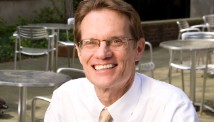 Christopher Slobogin
Christopher Slobogin In fact, the Foreign Intelligence Surveillance Court has agreed with that argument in approving bulk collection of American as well as foreign metadata for the past seven years. And if metadata must be stored for this purpose, it is an easy step from there to conclude that the contents of communications must be stored as well.
The key question then becomes when the NSA may "query" or identify the source of the metadata it has stored and read the communications it has collected. The NSA reports that it conducts queries of metadata only when it has a "reasonable, articulable" suspicion that a number is linked to a foreign threat that has been identified as such by the Foreign Intelligence Surveillance Court. Section 703 of the Patriot Act, as amended in 2008, limits looking at the contents of a communication to situations where the court has found probable cause to believe that information about a foreign threat will be revealed.
 Glenn Greenwald on NSA spying on allies
Glenn Greenwald on NSA spying on allies 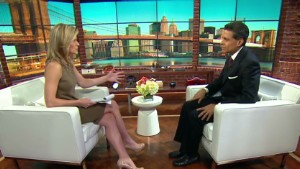 Spy Directors fire back on Capitol Hill
Spy Directors fire back on Capitol Hill 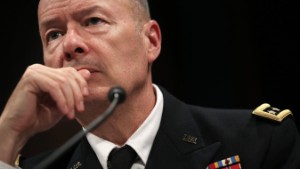 NSA chief: Europeans shared data
NSA chief: Europeans shared data Although one could ask for more oversight, this isn't a bad set of legal safeguards. If they were followed, the European naysayers about the NSA's exploits would not be so hot under the collar.
Many countries besides the United States collect and analyze electronic communications for national security purposes. The Wall Street Journal reported Wednesday that France and Spain helped our surveillance efforts by handing over phone records they collected on their citizens. Illustrated by the ease with which this spying took place, these countries impose fewer limitations on their surveillance activities than we do.
The real question is whether we follow those limitations. Although the NSA may not conduct queries or examine content unless it or a court determines that "national security" is at stake, national security is apparently at stake quite often, if the recent reports about monitoring hundreds of thousands of foreigners' calls as well as the calls of foreign leaders are true.
American journalist Glenn Greenwald, the principal conduit for Snowden's revelations, even claims that the NSA is as interested in economic intelligence as it is in exposing terrorist plots. He offers as evidence documents showing that the U.S. has spied on conferences about negotiating economic agreements and on oil companies and ministries that oversee mines and energy resources.
This may be the real reason European leaders are so incensed. Surveillance of terrorists is fine and probably can help them quite a bit. But surveillance of politicians and capitalists crosses boundaries that they might think should not be crossed, at least unless and until their intelligence agencies can do it as well as and as often as the U.S. can.
In the meantime, Congress should get serious about making sure the NSA abides by the laws it has enacted.
Follow us on Twitter @CNNOpinion.
Join us on Facebook/CNNOpinion.
Seeking dark matter a mile below
Posted by Unknown
Editor's note: Meg Urry is the Israel Munson professor of physics and astronomy at Yale University and director of the Yale Center for Astronomy and Astrophysics.
(CNN) -- A mile down in an abandoned gold mine in South Dakota, physicists in a state-of-the-art scientific laboratory are searching for elusive "dark matter" particles, which make up most of the mass in our universe.
So far, no one has ever seen dark matter directly. You can't see it, touch it, smell it, throw a net over it, or tag it in the ways particle physicists deal with ordinary particles. We only know it by its gravitational effects on galaxies.
On Wednesday, team members from LUX -- for Large Underground Xenon experiment -- announced the first results from their operation in the Sanford Underground Research Facility, deep in the former Homestake Mine in Lead, South Dakota -- where for three months they have been taking an 11-minute, 4,850 foot elevator ride down a mine shaft to work in their lab.
Previous dark matter experiments suggested we were very close to the first direct detection. They predicted that with just slightly more sensitive detectors, like those in the LUX experiment, scientists would have definite evidence.
 Meg Urry
Meg Urry Now LUX has shown those predictions were wrong. Were they correct, more than 1,600 particles should have been seen in the LUX data -- about one particle an hour. No such signals were seen. What the experiment succeeded in doing was ruling out earlier weak detections, showing they were not the real deal.
Weak detections can be real or just a random fluctuation. Taking a photograph of something faint and far away might, in the shortest exposure, suggest a hint of something -- maybe the shape of an alien spaceship or the Loch Ness monster. But in better exposures that collect more light or have sharper resolution, those hints should turn into obvious images -- unless it was just a fluctuation, that is, in which case it would not become clearer no matter how long the exposure.
If you can't see it, how did scientists find evidence of dark matter? One clear sign appeared in astronomical images taken in the 1980s, with photographic plates and new more sensitive detectors, that showed a really odd phenomenon: strange, long arcs of faint blue light behind groups of redder, rounder galaxies. At first, the arcs were dismissed as anomalies. They were like the Bigfoot of the sky: too odd to explain based on current knowledge, but not clear enough to claim a new species.
As detectors improved even more and telescopes got bigger, more arcs were seen, typically behind clusters of galaxies. That meant an arc had to be the stretched image of a background galaxy -- stretched by the gravity of the foreground cluster.
Albert Einstein predicted this phenomenon, called "gravitational lensing." According to his theory, gravity bends light much as the lenses in my glasses bend incoming light rays. An image of a very distant galaxy would be undistorted and true if no other galaxies were along the path between it and the Earth. But when light passes near or through a large mass -- like a cluster of galaxies, which can weigh as much as 1,000 times our Milky Way galaxy -- it bends because of the gravitational force of the cluster. The more massive the cluster, the more the light path curves.
The more the light path bends, the more distorted the image of the distant background galaxy. So, a distant galaxy that just happens to line up behind a nearby, massive cluster of galaxies looks strangely elongated. And most important, the distortion of the image tells astronomers how much the nearby cluster weighs.
Imagine having that on your resume: I searched for dark matter in an abandoned gold mine.Meg Urry
But the arcs implied far too much mass for the number of stars we could see. Other mass estimates, based on the motions of galaxies in a cluster and of stars in the outskirts of a galaxy, also suggested the presence of a lot of unseen mass.
This had to be some kind of matter that, unlike ordinary protons and electrons, didn't emit light. In fact, this dark matter, as it was called, didn't appear to follow any of the laws of physics, except gravity.
By now a mountain of data points to the existence of dark matter. We even have data that cannot be explained away by alternate theories of gravity.
So, what is dark matter? One candidate is a class of particles named WIMPs, an acronym standing for "weakly interacting massive particles." Some types of WIMPs have been ruled out by the LUX data.
LUX and similar experiments try to detect the recoil of the nucleus of an atom -- for example, the nucleus of the noble gas xenon -- when it is hit spot-on by a dark matter particle. The dark matter escapes but the atom emits a flash of light that can be detected.
The chances of this happening are exceedingly small -- about 1 in 10 trillion. It's like trying to see someone's nose twitch in a stadium full of crazy football fans. Putting a dark matter experiment deep underground quiets the noise by screening out lots of particles other than dark matter.
That's what brought the National Science Foundation and the Department of Energy to the Homestake gold mine, more than 130 years after gold-feverish dreamers flooded into South Dakota. After the Homestake Mine closed in 2003, several underground rooms were retrofitted as a dedicated science facility.
More than 100 hardworking physicists and engineers on the LUX team made this new measurement experiment possible, including many students and postdoctoral scholars searching for their version of gold. Whatever these young scientists end up doing in the future -- and with the skills they learn, they could do just about anything -- they made an important step toward direct detection of dark matter particles.
Imagine having that on your resume: I searched for dark matter in an abandoned gold mine.
"This is only the beginning for LUX," says one of the experiment leaders, Dan McKinsey, my colleague at Yale. "Now that we understand the instrument and its backgrounds, we will continue to take data, testing for more and more elusive candidates for dark matter."
As LUX and others continue to take data, we wait for a future announcement of, we hope, the first direct detection of dark matter.
Follow us on Twitter @CNNOpinion.
Join us on Facebook/CNNOpinion.
Big Papi is scary good
Posted by Unknown
Editor's note: Mike Downey is a former columnist for the Los Angeles Times and Chicago Tribune.
(CNN) -- Verrry scary things as we approached Halloween:
1. Zombies.
2. Vampires.
3. David Ortiz.
It was a dark and bone-chilling night in Boston, Massachusetts. A game of baseball was to be played -- a spine-tingly, goose-bumpy game, Game 6 of the 2013 World Series, in a park fenced in by a Green Monster -- and the visiting St. Louis Cardinals had a particularly petrifying sight to face on Halloween eve when, one by one, those wolfman-hairy Boston Red Sox came to bat:
"Big Papi."
 Mike Downey
Mike Downey (Screams. A thunder clap. A lightning bolt.)
Oooh, as scary as the walking dead. Up to the plate he stepped, 6 feet 4, 250 pounds, lugging a huge wooden club.
A cardinal or two on the front of a St. Louis player's shirt must have flown away in fear.
The rest of the Red Sox were eerie enough, with those demented-farmer-from-a-horror-film faces of theirs. Yet it was not the dark whiskers of David Americo Ortiz that were intimidating to anybody. It was that bat. That dangerous, deadly, pitcher's-bloodsucking bat.
He came to Wednesday night's game hitting .733.
 Red Sox player cheating or pitching?
Red Sox player cheating or pitching?  Music showdown between Boston, St. Louis
Music showdown between Boston, St. Louis  Was obstruction the right call?
Was obstruction the right call? No, not .333. Not even .533, which would have been a fairly surreal bat stat. The monster masher known in New England to all as "Big Papi" already had 11 hits in 15 official times at bat in this World Series, a fiendishly good, sell-your-soul batting average of .733.
Which is kind of like playing 18 holes of golf and getting birdies on 14 or 15 of them.
Ortiz also had four walks, without a strikeout. Once when he DIDN'T get on base, he walloped a ball to Fenway Park's right-field wall that required a fence-banging, rib-bruising catch on the part of the Cardinals' Carlos Beltran to prevent it from being a grand slam home run.
Scary good, this guy has been.
(A banshee's cry. A creaking door.)
On the opposite wall of Boston's ancient park, the intimidatingly high left-field one nicknamed the "Green Monster," ghosts inside probably were cackling in delight whenever Ortiz lurched up to home plate. Wednesday's game needed to be won by the visitors from Missouri to stay alive. They must have felt Fenway's old walls closing in on them, like anxious villagers finding themselves trapped by Stephen King under a dome.
St. Louis came armed with a strong team and a splendid pitching staff. Yet it had to at least consider the possibility of NOT having a pitcher throw a single pitch to Big Papi.
At least not one he could hit.
Wait ... you mean walk Ortiz on purpose every time up, no matter what?
It might beat getting beat by his bat.
"I remember them doing it to Frank Howard," the former big-league outfielder Rick Reichardt said when I touched base with him before Wednesday's game.
September 2, 1970: Cleveland Indians vs. Washington Senators. The manager of the visiting team, Alvin Dark, had a dread of seeing 6-foot-7, 255-pound Frank Howard stride toward the plate. "He's the monster man in baseball," Dark once said of him. "I never saw any man feared like this."
So, he intentionally walked Howard time after time. He made pitcher Sam McDowell walk him in the first inning. (Reichardt batted next and made an out.) Walked him in the third inning, even though Howard was the first man up. (Reichardt struck out.) Walked him in the fifth, again with none on base and none out. (Reichardt singled, then Howard scored on a wild pitch.)
It got weirder. Sixth inning, two Senators on base, Howard up, so the Cleveland manager decided to finally risk pitching to him. He told McDowell to go from the mound to first base. He brought in the great Dean Chance just to pitch to Howard, who promptly made Dark regret it with a base hit. Reichardt then knocked in a run and Washington won the game.
Would you walk the Red Sox's red-hot David Ortiz every time at bat?
"Every at-bat, I would not," Reichardt told me. "But depending on the situation, it could be automatic."
This is the kind of fear that Barry Bonds struck in his foes. Bonds was walked intentionally a whopping 120 times in the 2004 season alone. That is insane. Yet to opposing managers, it felt more logical than letting Bonds have a chance to belt a home run.
Sparky Anderson refused to let George Brett hit after being burned by him once too often. "Anytime I've got first base open," Anderson said in the '80s when he was managing the Detroit Tigers, "that's where he's going."
Walk him even with the bases full?
"You bet," Sparky said. "That's the way they pitched Ted Williams. I'll take my chances with whoever's on deck."
Ah, Ted Williams ... the scariest Red Sox of them all.
Willie McCovey of the San Francisco Giants was once walked deliberately by Anderson four times in a game, whereupon he yelled to Anderson in the dugout: "Who do you think I am, Ted Williams?"
Hmmm, maybe the specter of Ted Williams was there a-haunting Fenway Park as well, watching over Ortiz as the Red Sox went out hunting for the ultimate Halloween treat. The way that Ortiz had been hitting in this World Series, you could definitely describe it as Williams-esque.
Big Papi, unlike the man once nicknamed the Splendid Splinter, is a baseball slugger in an era when many fans have become suspicious of a hitter's success. Is his prowess the result of hard work and legitimate talent or are more sinister methods involved: a secret formula from a Frankenstein-like laboratory, perhaps?
Ahhh, but almost nobody seems to speculate that a banned steroid has ever passed through David Ortiz's flesh and veins. He seems immune to suspicion, possibly due to his always being a man of considerable size, big arms, big trunk, big head, and not some 170-pound beanpole who transformed into a baseball-crushing beast.
"They pick me (to be drug-tested) every time, I don't know why," Ortiz said a few years ago with a bemused shrug. "All I know is all they are going to find is a lot of rice and beans."
He came to Halloween eve looking to torment and haunt everyone from St. Louis to the very end.
(A maniacal laugh. A wolf's howl.)
The Cardinals, well, they were looking to do whatever it took, short of garlic or a stake to the heart, to fend off Fenway Park's scary bat.
Follow us on Twitter @CNNOpinion.
Join us on Facebook/CNNOpinion.
47 million face benefit cut
Posted by Unknown
Editor's note: Bob Aiken is chief executive of Feeding America, a nonprofit organization that seeks to feed the hungry through a national network of member food banks and also fosters efforts to end hunger.
(CNN) -- In the last few weeks, the media has been ablaze with news of the government shutdown, the debt limit and health care reform. Missing from most public debate, however, is the cut to the Supplemental Nutrition Assistance Program, or SNAP, benefits that will take place on November 1 and will affect every one of the more than 47 million Americans who depend on the program to help meet their basic nutritional needs.
When the changes are implemented, everyone enrolled in the SNAP program will see their benefits cut. For example, a family of four that qualifies for the maximum monthly benefit will lose $36 a month -- that's a 5% reduction.
While this may not seem like a lot, I speak from experience when I say $36 provides much more than you might think. This past September, I participated in the SNAP challenge.
 Bob Aiken
Bob Aiken For a week, I stuck to a budget of about $1.50 per meal, the average SNAP benefit for one person. It was a tough week. I found myself drained and constantly thinking of food.
When the SNAP cuts take effect next week, benefits will average about $1.40 per meal. I can't imagine the strain this will place on struggling families who are counting every penny and trying to stretch their benefits.
Most families do not have enough to make it through the month already -- 90% of SNAP benefits are redeemed by the third week of the month and 58% of food bank clients currently receiving SNAP turn to food banks for help at least six months out of the year.
The upcoming cuts will result in an increased need for food assistance at food pantries and soup kitchens across the nation when many are already stretched meeting sustained high need in the wake of the recession.
 Panera CEO takes food stamp challenge
Panera CEO takes food stamp challenge 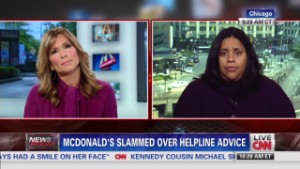 McDonald's helpline: try foodstamps
McDonald's helpline: try foodstamps  John King: We were on food stamps
John King: We were on food stamps At Feeding America, we're doing everything we can to prepare our network of food banks for the increased demand, but charity alone cannot make up for the impending $5 billion loss in SNAP funding. The reduced funding will result in the loss of nearly 1.9 billion meals in the next year. That's more than half of Feeding America's total projected output for 2014.
The cuts this week are significant and will put a strain on millions of families struggling with food insecurity, hitting them right before the holiday season. Adding to this is the fact that Congress is considering much deeper cuts to SNAP benefits and eligibility restrictions that will affect millions of low-income people as part of the farm bill.
In September, the House passed legislation cutting $40 billion in SNAP over the next 10 years, according to a Feeding America analysis. Together with this week's cuts, the pending legislation will result in a loss of nearly 3.4 billion meals for low-income Americans in 2014 alone, according to a Feeding America analysis. These are meals our most vulnerable citizens cannot afford to lose, and food banks and other charities simply cannot fill that gap.
While we cannot stop this week's SNAP cuts, we can prevent further cuts from taking place. Call your member of Congress and tell them not to cut SNAP.
Helping our neighbors in need is a fundamental American value, and fighting hunger is a public-private partnership. We need a strong charitable system and a strong federal anti-hunger safety net. Working together, individuals, charities, business and government can solve hunger. Do your part to make sure no one in America goes hungry.
Follow us on Twitter @CNNOpinion.
Join us on Facebook/CNNOpinion.
Jonas Brothers: It's over for now
Posted by Unknown
This video helped convict teen driver
Posted by Unknown
Tunnel linking 2 continents opens
Posted by Unknown
Editor's note: John Defterios is CNN's Emerging Markets Editor and anchor of Global Exchange. Follow him on Twitter.
(CNN) -- As a country, Turkey is often described as a bridge between Europe and Asia. On Tuesday, for the first time, the two continents will be officially connected by a multi-billion dollar underwater railway tunnel.
Turkey's Prime Minister Recep Tayyip Erdogan and President Abdullah Gul, Japanese Prime Minister Shinzo Abe, Romanian Prime Minister Victor Ponta and numerous transport and trade ministers gathered to open the giant rail system, on the country's republic day.
The Marmaray link, named by combining the Sea of Marmara with "ray," meaning rail in Turkish, is a part of $4.5 billion, 76-kilometer mega-project launched by the government in 2004.
Erdogan, speaking at the event, said the project "connects history and future, past and the future, as well as connecting continents, Marmaray connects people, nations and countries."
 The challenges of connecting continents
The challenges of connecting continents  World's deepest submerged tunnel
World's deepest submerged tunnel Its scale, along with designs for a third airport, a parallel canal for the Bosphorus river and a third suspension bridge, are seen as overly ambitious plans by Erdogan to build his legacy and hark back to days of the Ottoman Empire.
The bold project brings the dreams of Sultan Abdul Medjid, first outlined more than a century ago, to reality as the Turkish Republic celebrates its 90th anniversary.
READ MORE: Silk Road railways link Europe and Asia
It is finally being completed by Erdogan after he faced intense protests for the redevelopment plans of a central Istanbul park with Ottoman-era military barracks and a mosque. The 13.6 kilometer (8.5 miles) tunnel -- the deepest of its kind -- passes under the Bosphorus Strait, one of the busiest shipping arteries in the world.
The financial capital of Istanbul, with a population of nearly 15 million people, is often snarled with traffic, with some two million residents making the crossing between continents on a daily basis.
According to Erdogan, Marmaray "is not a project only for Istanbul Marmaray is a project for whole humanity."
The rail system, built by a Turkish-Japanese consortium, is expected to have a capacity of one and a half million people a day, connecting the two continents in about four minutes.
The Marmaray is being described as a vital link on the modern Silk Road, which will provide seamless rail transport from Turkey to China.
Turkey, under Erdogan, has looked east to tap emerging markets for growth. More than half its exports go to the European Union, and that slowdown has cut Turkey's annual growth in half after it peaked above 8% before the 2008-09 financial crisis.
READ MORE: The world's spectacular infrastructure projects
Beyond the size of such an undertaking, digging for the Marmaray uncovered some 40 thousand artefacts and helped archaeologists trace Istanbul's history back 8,500 years, 2,500 more than ever believed before.
However the discoveries delayed the project for four years, which frustrated the prime minister who, analysts and businessmen say, wants to put a permanent imprint on Turkey's financial capital.
The project also had to account for Turkey's long history of violent earthquakes, and the tunnel's position parallel to a major fault line. Transport minister Binali Yildirim has outlined the precautions, including that the tunnel is designed handle a quake of 9.0 magnitude due to construction that allows movement.
READ MORE: Connecting continents amid earthquakes
With these infrastructure projects Erdogan is aiming high, striving to increase Turkey's impact as the republic heads towards its 100th anniversary.
Erdogan believes Turkey can double its gross domestic product to $2 trillion, and by doing so stake its claim as one of the top ten economies internationally.
But obtaining the financing for this activity after such fierce public resistance may stand in the way of this government's master plan.
Tuesday, however, was a day in which Erdogan could point to his pride in Marmaray. It is, he said, "an artwork that will find its place in history as an environmentalist project as well as being a project of precision and excellence."